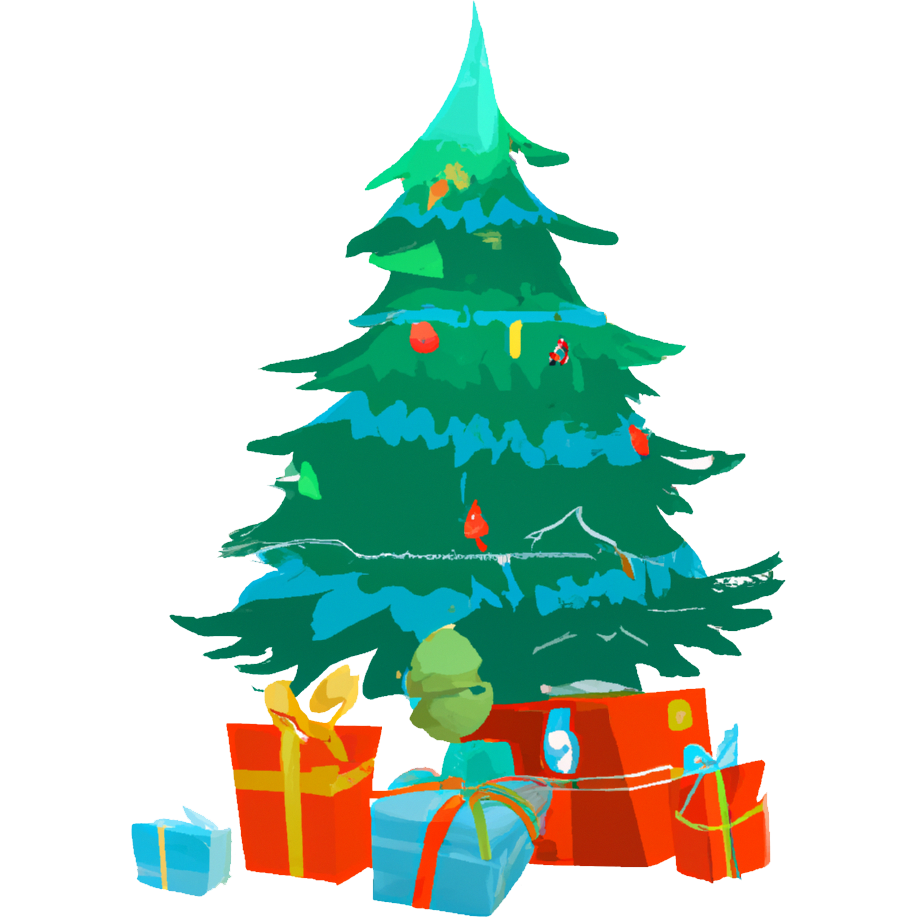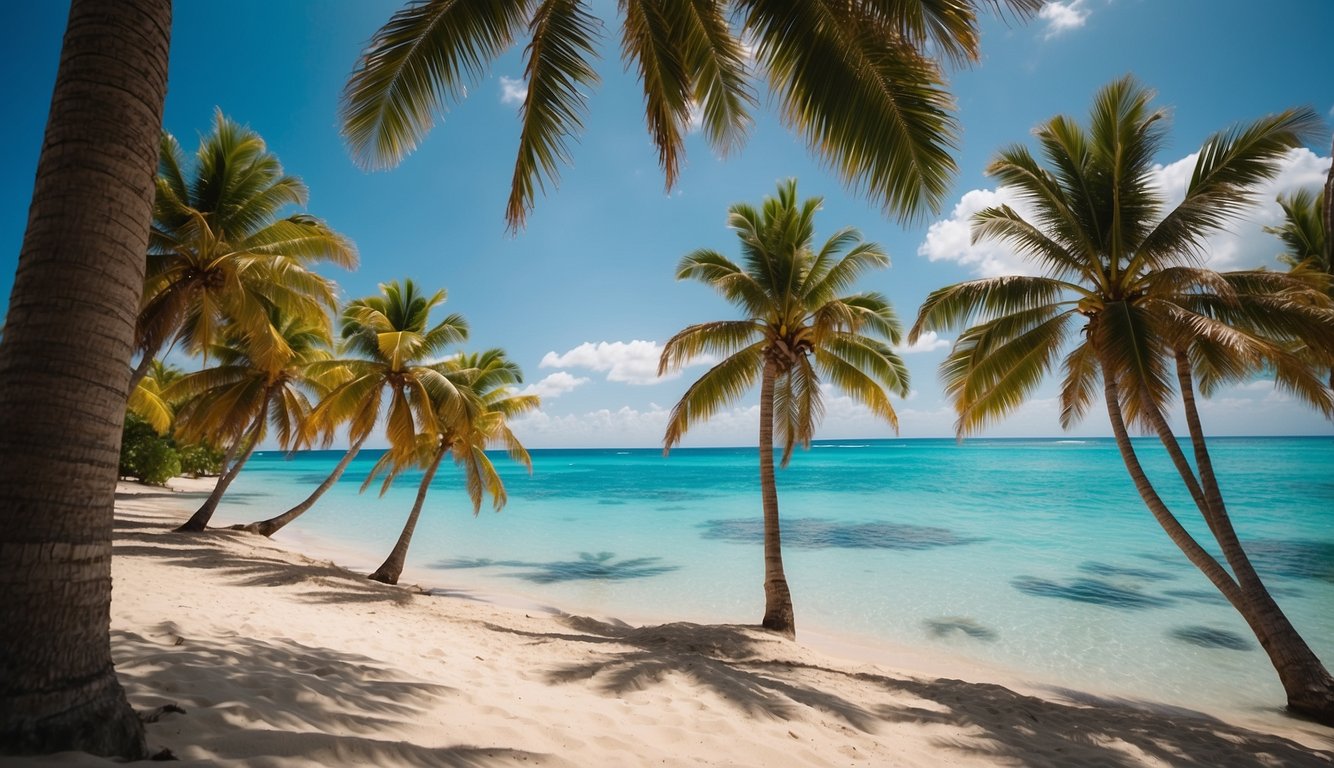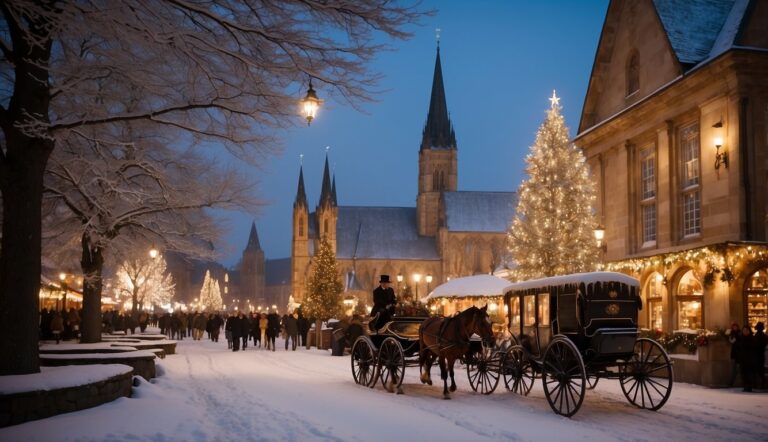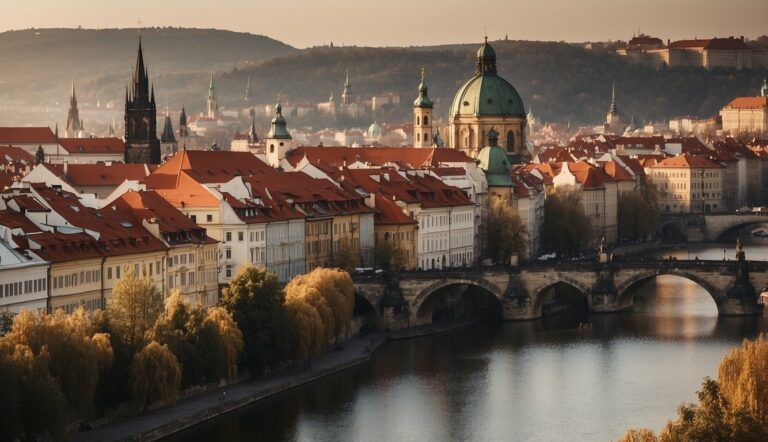Christmas in the Dominican Republic: Authentic Dominican Republic Christmas Traditions
Christmas in the Dominican Republic is a vibrant and joyful celebration, rich with traditions that reflect the country’s cultural heritage.
As the holiday season approaches, homes and streets come alive with festive decorations such as charamicos, which are Dominican-style Christmas trees made from dried branches and adorned with colourful ornaments.
These unique decorations mirror the warmth and spirit of the Dominican people, embodying a blend of aesthetic creativity and traditional symbolism.
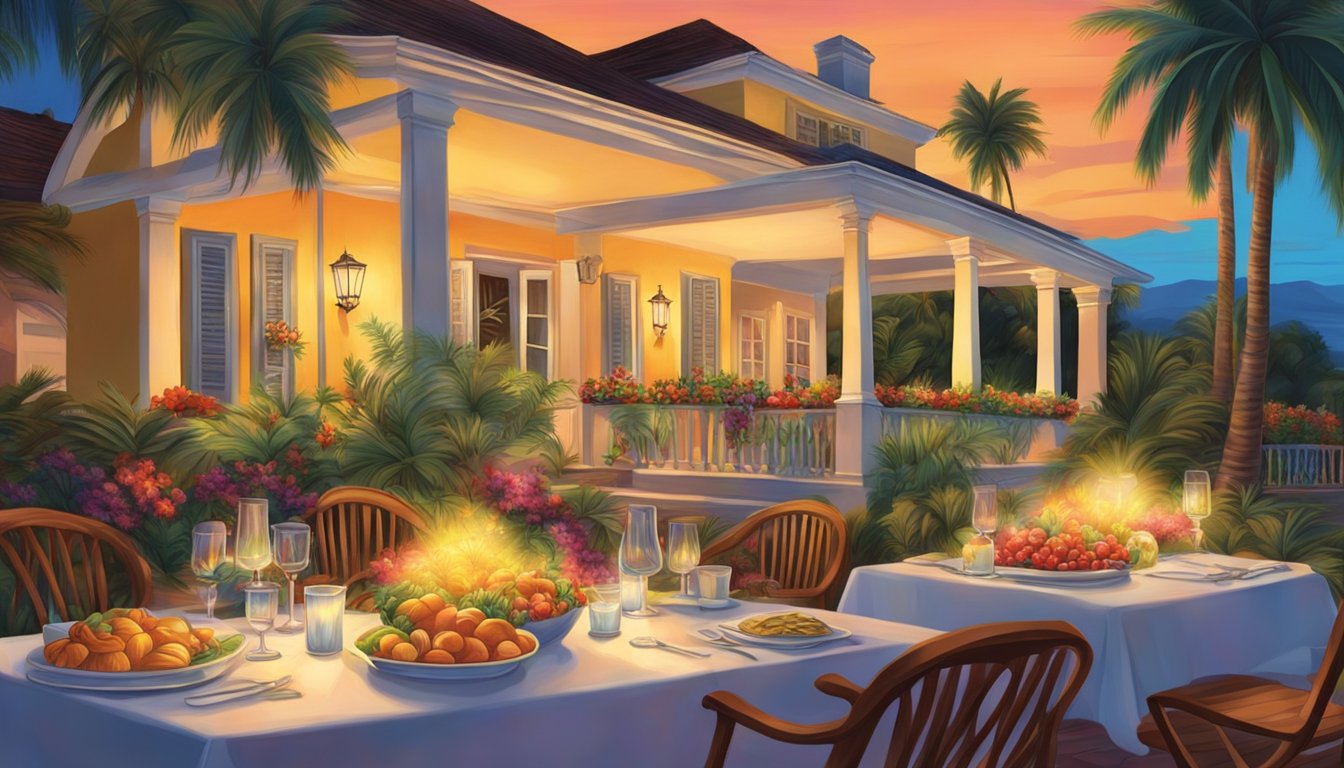
Poinsettias, known locally as “flores de Pascua,” adorn public spaces and households, their bright red leaves symbolizing the holiday cheer that envelops the country.
Dominican families emphasise togetherness during the holidays, with Christmas Eve, or ‘Noche Buena,’ being one of the most cherished family occasions of the year.
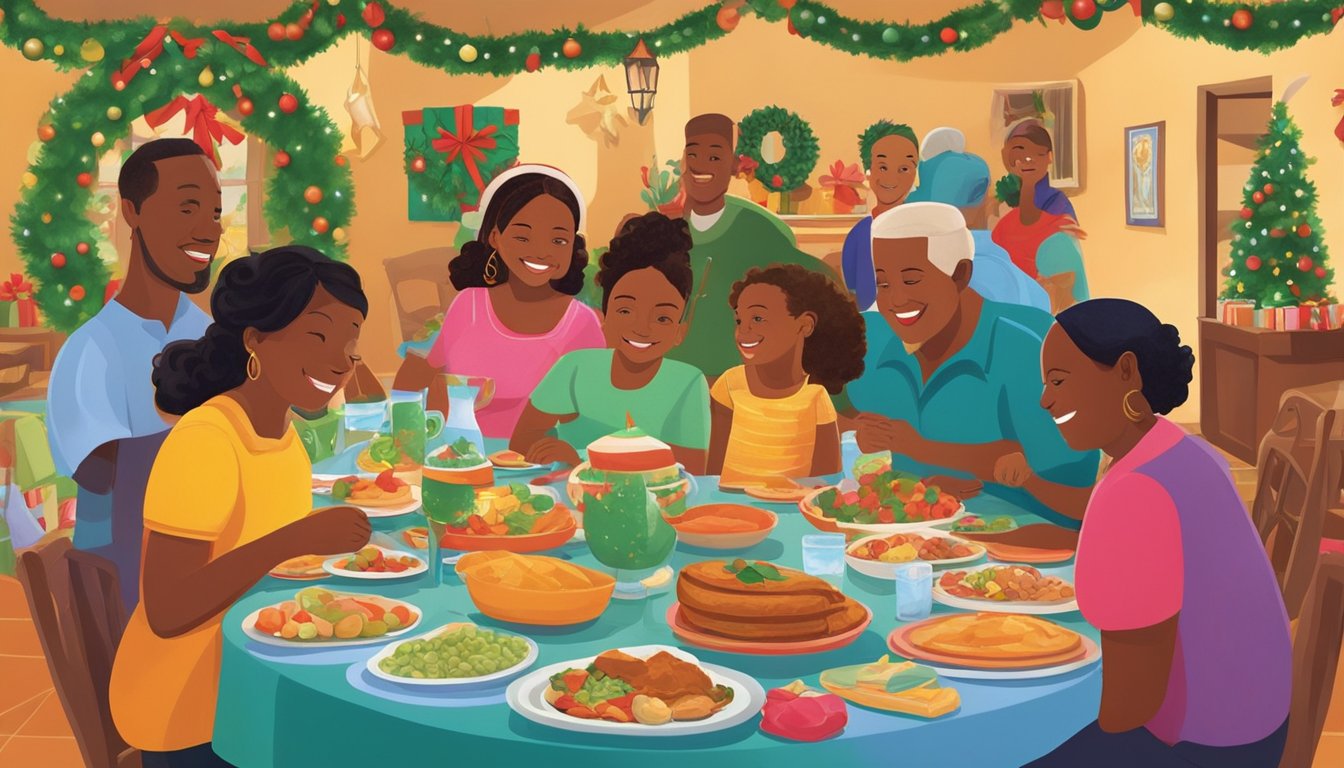
History of Christmas in the Dominican Republic
Christmas traditions in the Dominican Republic have evolved over centuries and are deeply influenced by Spanish culture and Catholicism.
Origins of Dominican Christmas Traditions
The Dominican Republic showcases a unique blend of traditions around Christmas.
Three Kings Day, or Epiphany, observed on January 6th, is a significant event celebrating the visit of the Magi to the Christ Child. This tradition aligns with the wider Caribbean and Latin American practices.
The period leading to Christmas is marked with enthusiasm, reflecting the populace’s dedication to the holiday’s religious roots.
Influence of Spanish Culture
The influence of Spanish culture on Christmas traditions in the Dominican Republic is evident since the colonial era.
Spaniards introduced Catholic traditions, and Christmas in the Dominican Republic became synonymous with religious expressions, such as attending Catholic Mass on Christmas Eve, known as the ‘Misa del Gallo.’
These practices interweave with local customs, creating a Christmas celebration that is distinctly Dominican while honouring its Spanish heritage.
Christmas Traditions

In the Dominican Republic, Christmas traditions are deeply rooted in religious observances and family gatherings. Such traditions cover the essence of the holiday spirit in this culturally rich Caribbean nation.
Noche Buena and La Misa del Gallo
Noche Buena, or Christmas Eve, is the pinnacle of holiday celebrations, where families come together for a feast to mark the beginning of Christmas.
It serves as a time for sharing meals and joy.
The culminating event of Noche Buena is La Misa del Gallo, or Midnight Mass, a key religious observance that reflects the Dominican Republic’s strong Catholic heritage.
The mass, held at midnight, welcomes Christmas Day and is a community event attended by many as a renewal of faith and family bonds.
Reyes or Three Kings Day
Following the festivities of Christmas, Reyes, also known as Three Kings Day, is celebrated on January 6th.
This day marks the arrival of the three wise men in Christian tradition and is a day of gift-giving, especially to children.
Families often gather again, extending the Christmas celebrations into the New Year, highlighting the importance of family and tradition in the Dominican culture.
Dominican Christmas Decorations
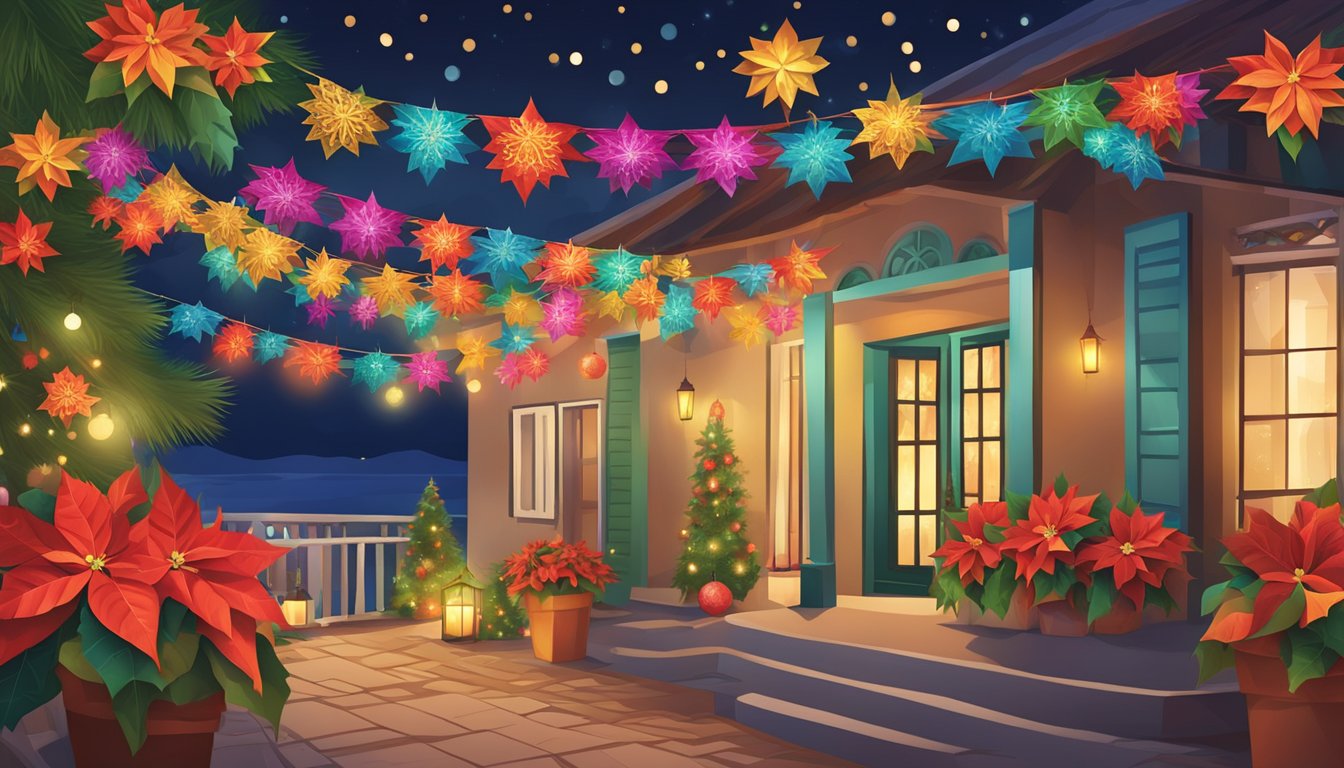
In the Dominican Republic, vibrant and traditional decorations showcase the nation’s festive spirit. Among these, Charamicos and Nacimientos accompanied by the iconic Poinsettias bring a distinctive Caribbean flair to the holiday season.
Charamicos
Charamicos are a creative Dominican alternative to the typical Christmas tree.
These are handmade from dried branches and twigs, often from local trees, which are then shaped and painted to resemble small fir trees.
The tradition of crafting Charamicos stems from adapting to the tropical climate where pine trees are scarce.
Locals decorate these structures with bright colours, lights, and ornaments, making them a common and eye-catching sight during the festive period.
Nacimientos and Poinsettias
Nacimientos, or nativity scenes, are central to Christmas decorations in Dominican homes.
These intricate displays depicting the birth of Jesus are carefully assembled and often become the focal point of household decorations.
Poinsettias, with their flaming red leaves, are another integral part of the tradition.
Known as Flores de Pascua in the Dominican Republic, these flowers are used to decorate homes and given as gifts, symbolizing the holiday’s joy and the act of sharing with friends and family.
These flowers accompany the Nacimientos, enhancing the visual appeal and adding to the religious significance of the decor.
Typical Christmas Foods and Drinks
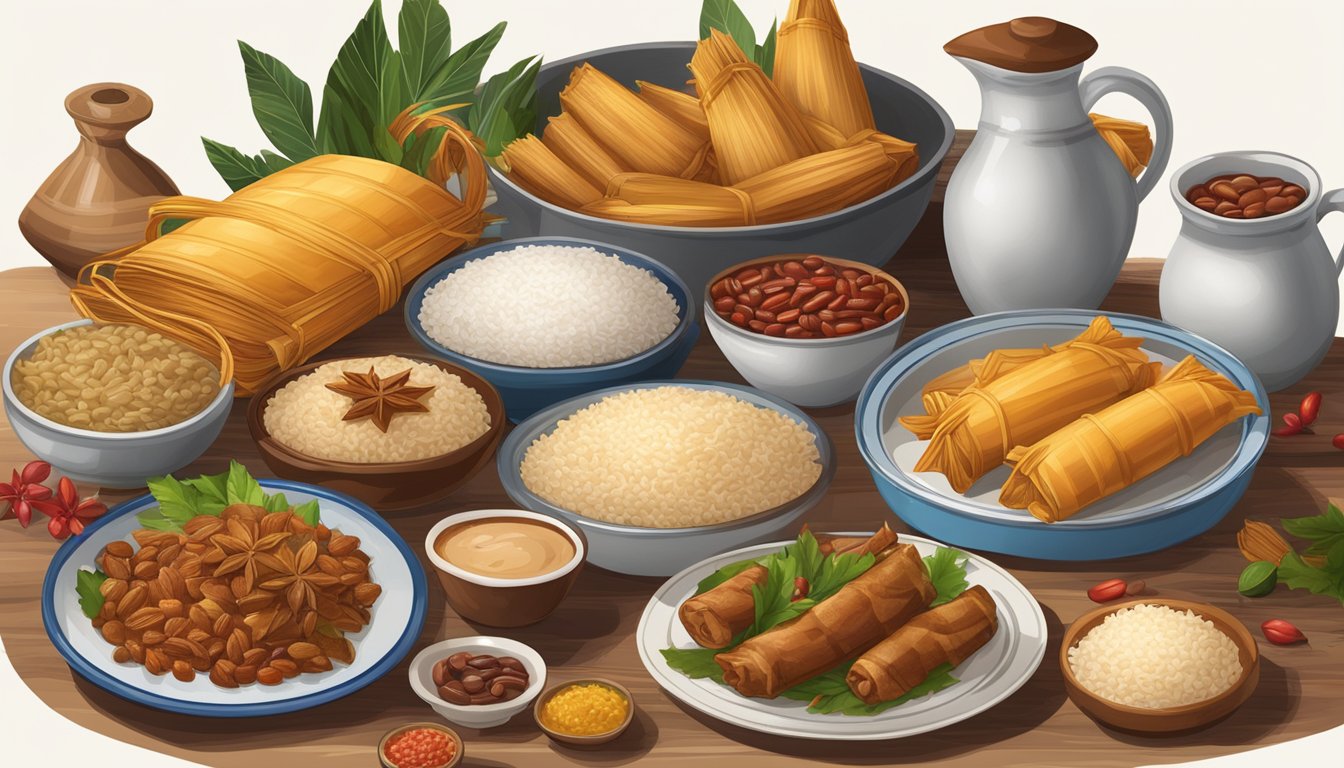
In the Dominican Republic, Christmas meal traditions blend Spanish influences with local flavours to create a rich and festive gastronomic experience.
Christmas dinner features a variety of savoury main dishes and is complimented by sweet desserts and spiced beverages that are specific to the holiday season.
Main Dishes
Cerdo Asado (Roast Pork): A staple in Dominican Christmas celebrations, this succulent dish is marinated in a mix of local herbs and spices before being slow-roasted to perfection.
Pasteles en Hojas: Similar to tamales, these are made with a masa of plantains or tubers filled with seasoned meat, typically wrapped in banana leaves and steamed.
Desserts and Beverages
Telera: A sweet and airy bread that is a customary part of the Christmas Eve meal.
Turrón: A traditional Christmas confection made from honey, eggs, sugar, and toasted nuts, often enjoyed after meals.
Jalea de Batata: A dessert prepared with white sweet potatoes, coconut milk, and evaporated milk, forming a sweet jelly-like treat.
Ponche: The Dominican take on eggnog, made with evaporated milk, eggs, and spices, and occasionally enhanced with rum.
Jengibre: A strong tea brewed from fresh ginger, typically consumed during the chilly evenings of the holiday season.
Christmas Eve Customs
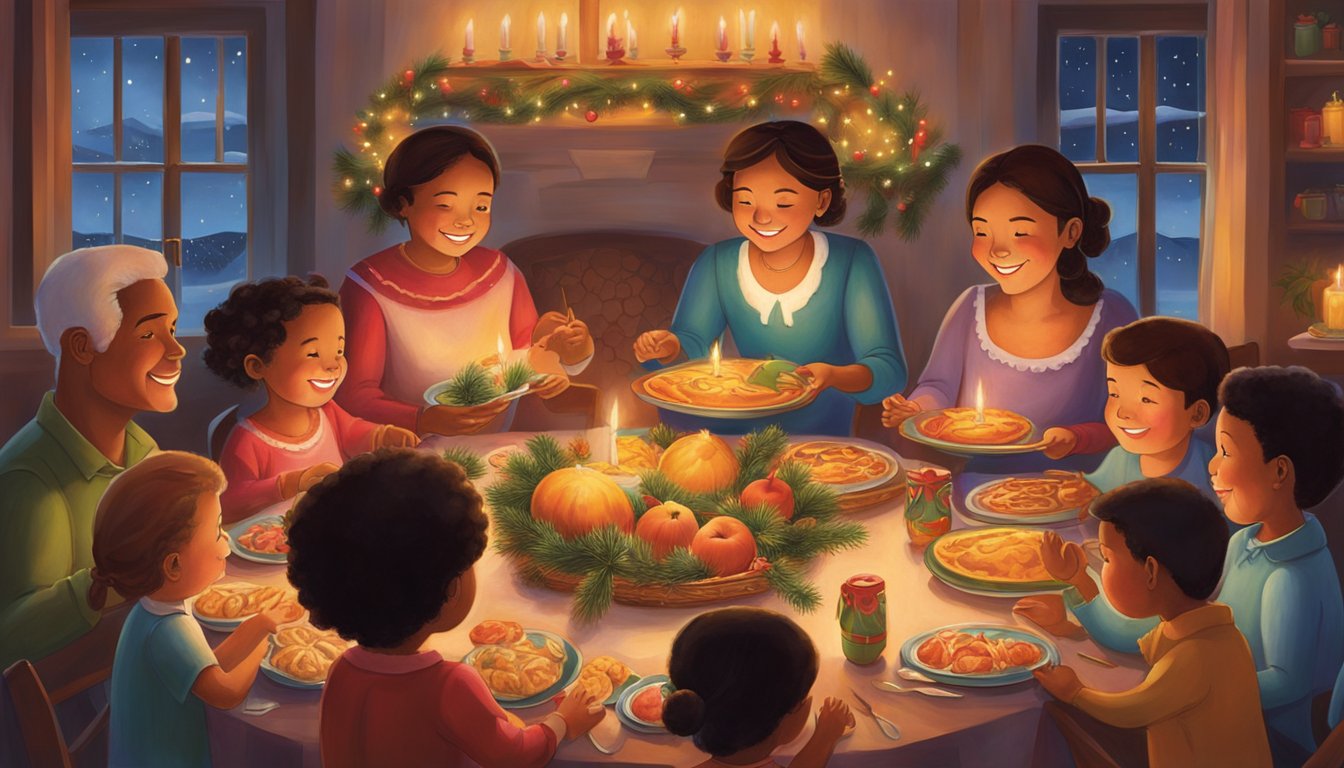
Christmas Eve, known as “La Noche Buena,” is a time of festive gatherings and cherished rituals in the Dominican Republic. Families unite to celebrate with traditional activities and a grand feast, marking the occasion as one of the most significant events on the Christmas calendar.
Aguinaldos and Parrandas
Aguinaldos refers to the folk songs reminiscent of carols and are integral to the season’s festivity.
Dominicans go from house to house, singing these aguinaldos to spread holiday cheer.
Often accompanied by the lively sounds of parrandas, which are impromptu musical groups, the atmosphere turns joyous and celebratory.
The music is a blend of African, Spanish, and indigenous influences, reflecting the Dominican people’s cultural diversity.
Christmas Eve Dinner Rituals
On Christmas Eve, families in the Dominican Republic partake in a grand feast.
The dinner is a major part of the celebration and features traditional dishes.
One of the centrepiece dishes is pasteles en hojas, a tamale-like staple made from ground roots and wrapped in banana leaves.
The dinner table is also likely to include a charamico, a Dominican version of the Christmas tree, typically handmade from dried branches and painted white to resemble snow, setting a festive mood.
It represents the island’s adaptation of the traditional Christmas tree and infuses local artistry into the holiday.
Modern Christmas Celebrations
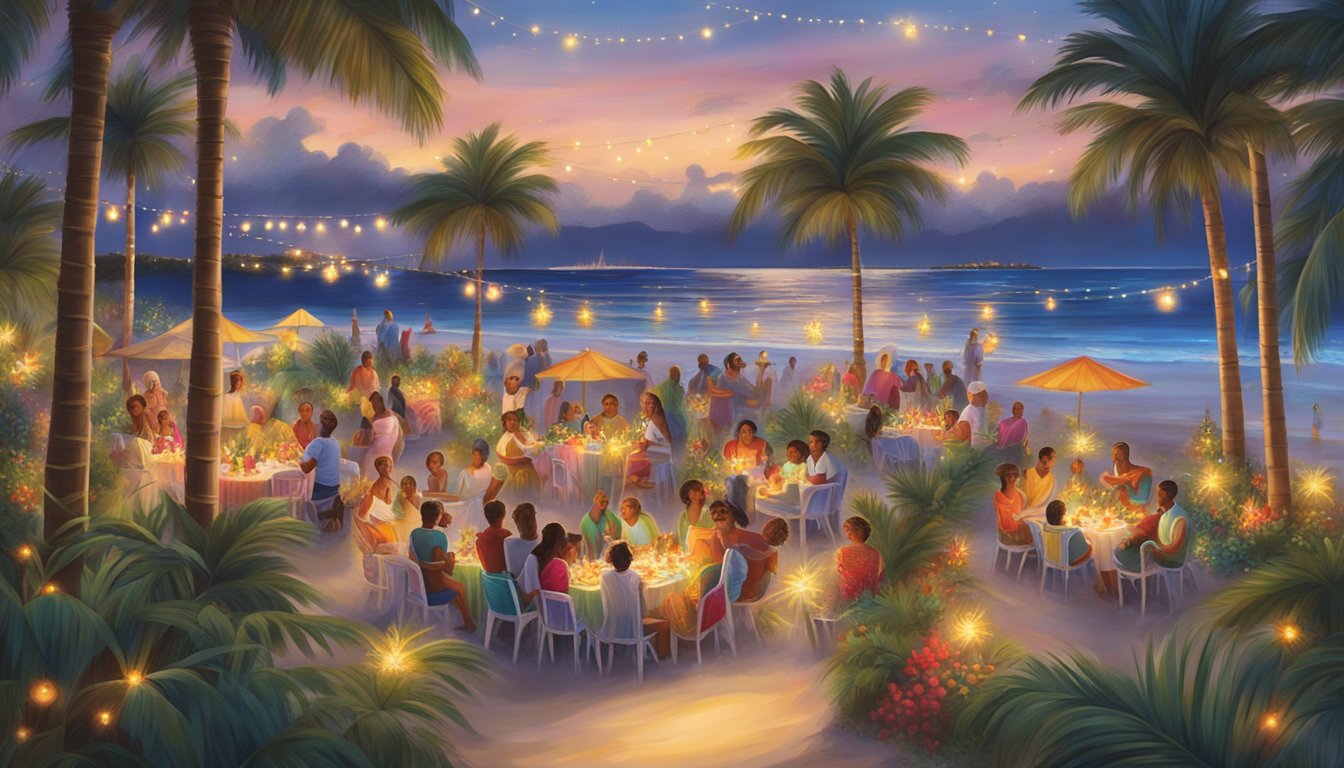
Christmas in the Dominican Republic is a time when vibrant traditions manifest in the bustling cities and along the serene coasts.
Urban Traditions
In urban areas like Santo Domingo, Christmas is a blend of religious fervour and festive merrymaking.
The cities are decked with lights and poinsettias, known locally as flores de Pascua, symbolizing the holiday cheer.
Families gather for large meals where potato salad often finds its place among an array of traditional dishes.
Rice with pigeon peas — arroz con gandules — becomes a centrepiece of the Dominican Christmas feast, reflecting the island’s rich culinary heritage.
Coastal Celebrations
On the coastal front, particularly in resort destinations like Punta Cana, Christmas takes a luxurious feel.
Here, tourists and locals can enjoy the holiday in high-end villas that offer comfort and festivity.
Coastal traditions may include beachfront dinners under the stars and exclusive parties that capture the essence of a tropical Christmas, pairing local customs with luxury experiences that cater to diverse tastes and preferences.
Sociocultural Aspects
Christmas in the Dominican Republic is distinguished by close-knit family gatherings and devout religious observances, reflecting the country’s value for togetherness and faith traditions.
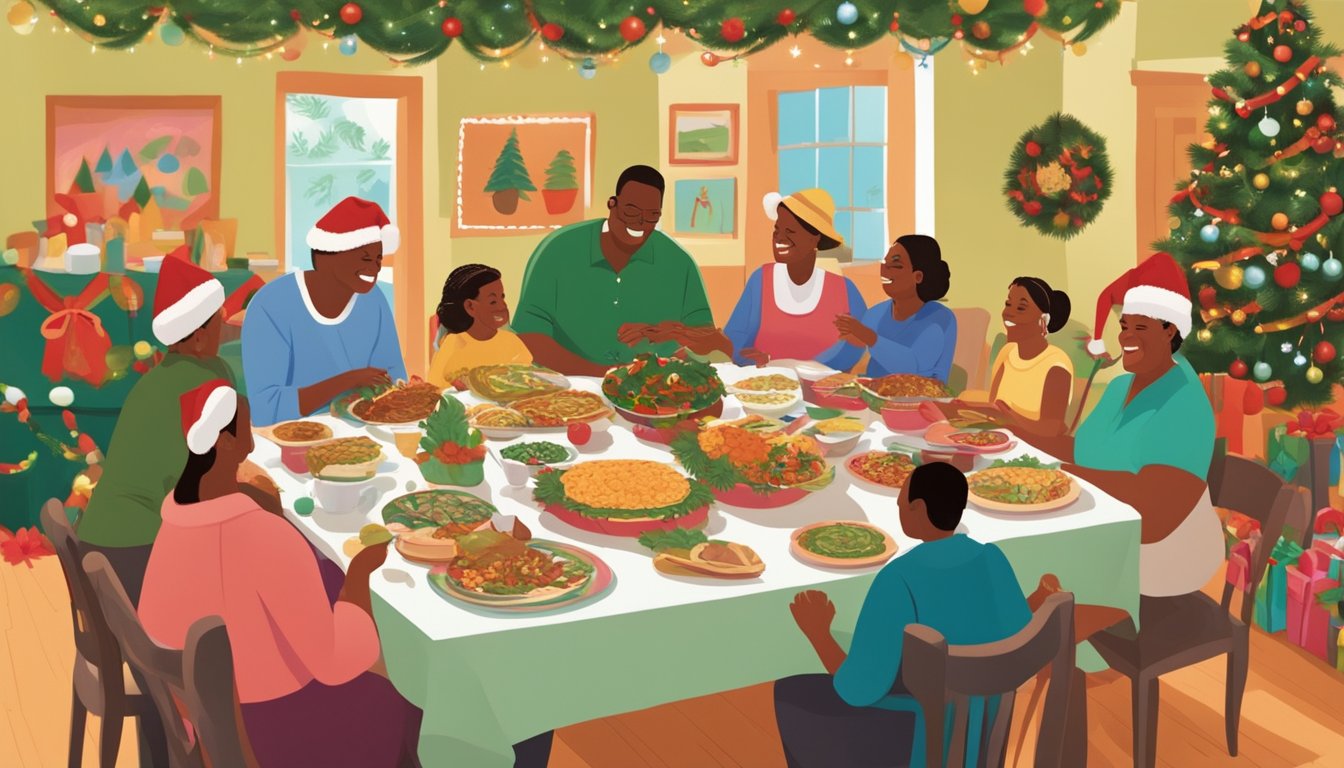
Family and Community
The celebration of Christmas is largely centred around extensive family gatherings deemed crucial in the Dominican social fabric.
Homes become meeting points where relatives from near and far congregate to share food, music, and festivities.
Meals are often grand, featuring a variety of dishes that cater to all family members.
Tables at Dominican Christmas gatherings might include:
- Traditional dishes like roast pork (lechón asado)
- Rice with pigeon peas (moro de guandules)
- Pasteles en hoja
- Sweet beans (habichuelas con dulce)
These gatherings are a vibrant display of community, involving not just immediate families but extended kin and often friends, underscoring the concept of community inclusiveness during the festive season.
Religious Observances
Catholicism plays a pivotal role in Dominican Christmas traditions with religious observances like the Misa de Gallo (Rooster’s Mass), a Catholic Mass celebrated on Christmas Eve.
This mass is a cornerstone of the season’s observances, as it signifies a time when family members join together in a collective expression of faith.
Misa de Gallo begins late on Christmas Eve and extends into the early hours of Christmas Day.
Parishioners often unite at church after their family meal to attend this Mass, signifying the importance of religion in celebrating the holiday.
The church at this time is a place of worship and a space for communal gathering, emphasizing unity in both belief and practice.
Christmas Music and Entertainment
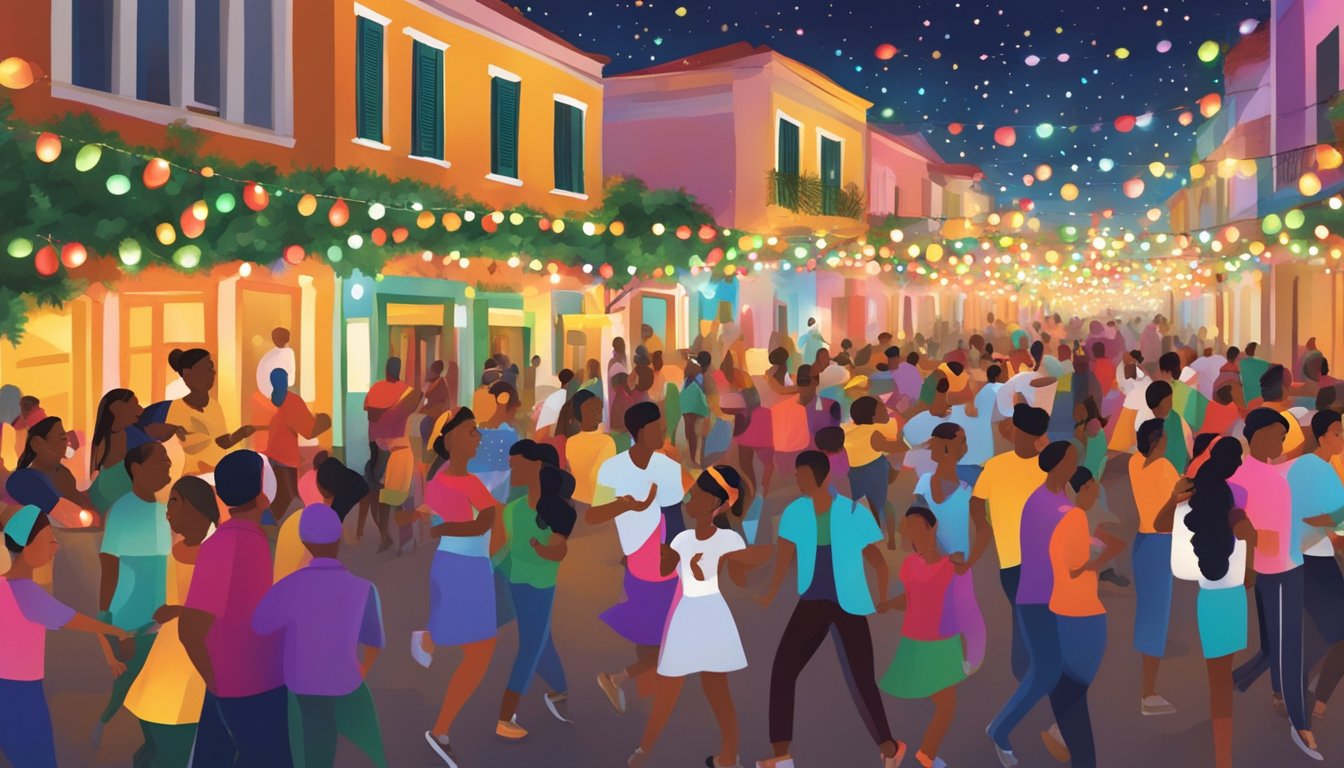
In the Dominican Republic, Christmas time is when music and entertainment take centre stage, reflecting the country’s cultural vibrancy and festive spirit.
Merengue and Local Rhythms
Merengue, the national dance and music of the Dominican Republic, infuses Christmas celebrations with its fast-paced and joyful beats.
During the holiday season, classic Merengue tunes and other local rhythms become staples at gatherings and public festivities.
Feliz Navidad: This universally recognized Christmas song continues to resonate across the nation, intertwined with dominant genres like Merengue.
Parrandas Navideñas: These are the Dominican version of caroling. Parrandas are spontaneous and involve groups of people going from house to house with instruments, singing and spreading cheer.
Public Festivities and Fireworks
Public celebrations are marked by lively entertainment and nighttime displays of fuegos artificiales (fireworks).
These events add to the festive atmosphere and draw communities together.
Fireworks are primarily featured during major festivities, with bright bursts of light and colour igniting the night skies.
Christmas music concerts and performances are common, showcasing international Christmas classics and the rich tapestry of Dominican musical heritage.
The combination of Merengue, parrandas navideñas, and the glow of fuegos artificiales creates an unforgettable Christmas ambiance that highlights the Dominican Republic’s passion for music and celebration.
Frequently Asked Questions
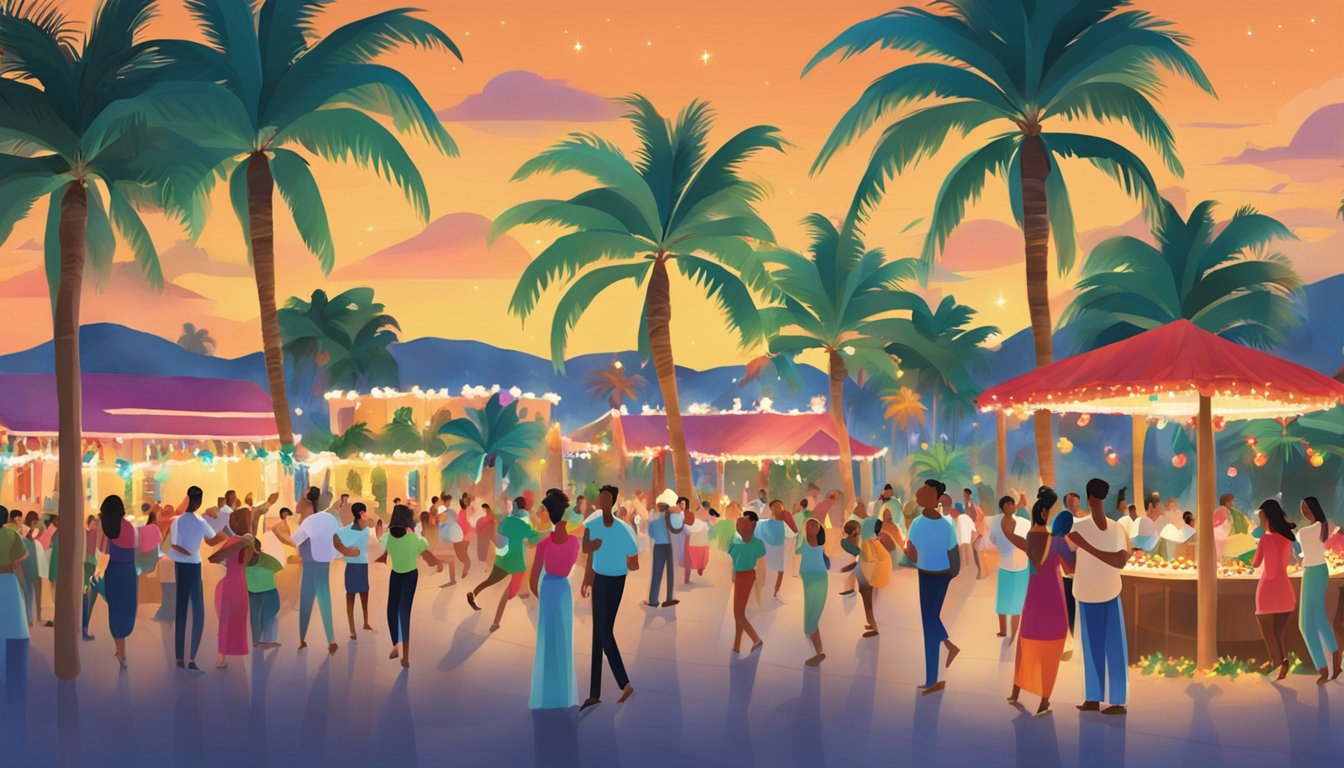
What are the traditional Christmas dishes in the Dominican Republic?
Dominicans typically indulge in a feast that includes roast pork, pigeon peas with rice, pastelón, and a variety of sweets and fruits. These dishes are central to any Christmas celebration in Dominican homes.
How do Dominicans celebrate Christmas differently than other countries?
Christmas in the Dominican Republic is marked by joyous music, dance, and extended family gatherings leading up to Noche Buena, Christmas Eve.
They attend the Misa de Gallo, a midnight mass, which signifies the strong Catholic faith prevalent in the country.
Which historical events have shaped Christmas traditions in the Dominican Republic?
Historically, the Spanish colonization and the spread of Catholicism have deeply influenced Dominican Christmas traditions, embedding European festive practices such as the Misa de Gallo with a distinctly Dominican flavour.
What are common Christmas decorations in Dominican homes?
Dominican homes are commonly decorated with vibrant poinsettias, known locally as “Flores de Pascua,” and Christmas trees. Bright lights, nativity scenes, and handmade ornaments adorn homes during the holiday season.
Can you describe the Christmas holiday season in Dominican Republic resorts?
Resorts in the Dominican Republic embrace the festive season by hosting special dinners, lively cultural music and dance events, and beach activities tailored to reflect the Dominican Christmas spirit, catering to locals and tourists.
What unique Christmas traditions are observed exclusively in the Dominican Republic?
Unique to the Dominican Republic is the aguinaldo. Groups of friends and family sing carols in their neighbourhoods while keeping their Dominican heritage alive.
The celebration of Angelitos, a tradition for children, mirrors the concept of Secret Santa and adds to the local Christmas charm.
